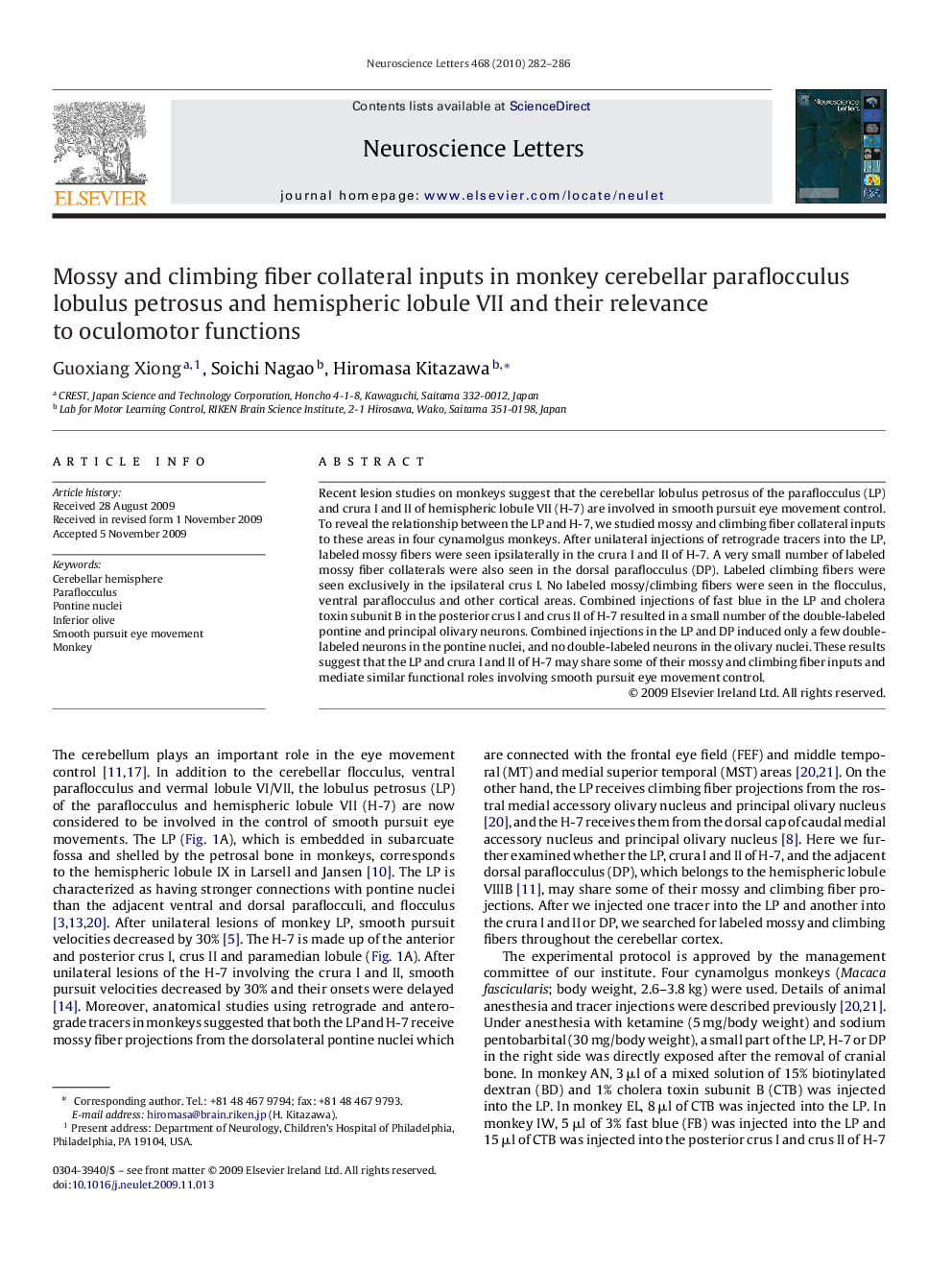| Article ID | Journal | Published Year | Pages | File Type |
|---|---|---|---|---|
| 4346729 | Neuroscience Letters | 2010 | 5 Pages |
Recent lesion studies on monkeys suggest that the cerebellar lobulus petrosus of the paraflocculus (LP) and crura I and II of hemispheric lobule VII (H-7) are involved in smooth pursuit eye movement control. To reveal the relationship between the LP and H-7, we studied mossy and climbing fiber collateral inputs to these areas in four cynamolgus monkeys. After unilateral injections of retrograde tracers into the LP, labeled mossy fibers were seen ipsilaterally in the crura I and II of H-7. A very small number of labeled mossy fiber collaterals were also seen in the dorsal paraflocculus (DP). Labeled climbing fibers were seen exclusively in the ipsilateral crus I. No labeled mossy/climbing fibers were seen in the flocculus, ventral paraflocculus and other cortical areas. Combined injections of fast blue in the LP and cholera toxin subunit B in the posterior crus I and crus II of H-7 resulted in a small number of the double-labeled pontine and principal olivary neurons. Combined injections in the LP and DP induced only a few double-labeled neurons in the pontine nuclei, and no double-labeled neurons in the olivary nuclei. These results suggest that the LP and crura I and II of H-7 may share some of their mossy and climbing fiber inputs and mediate similar functional roles involving smooth pursuit eye movement control.
